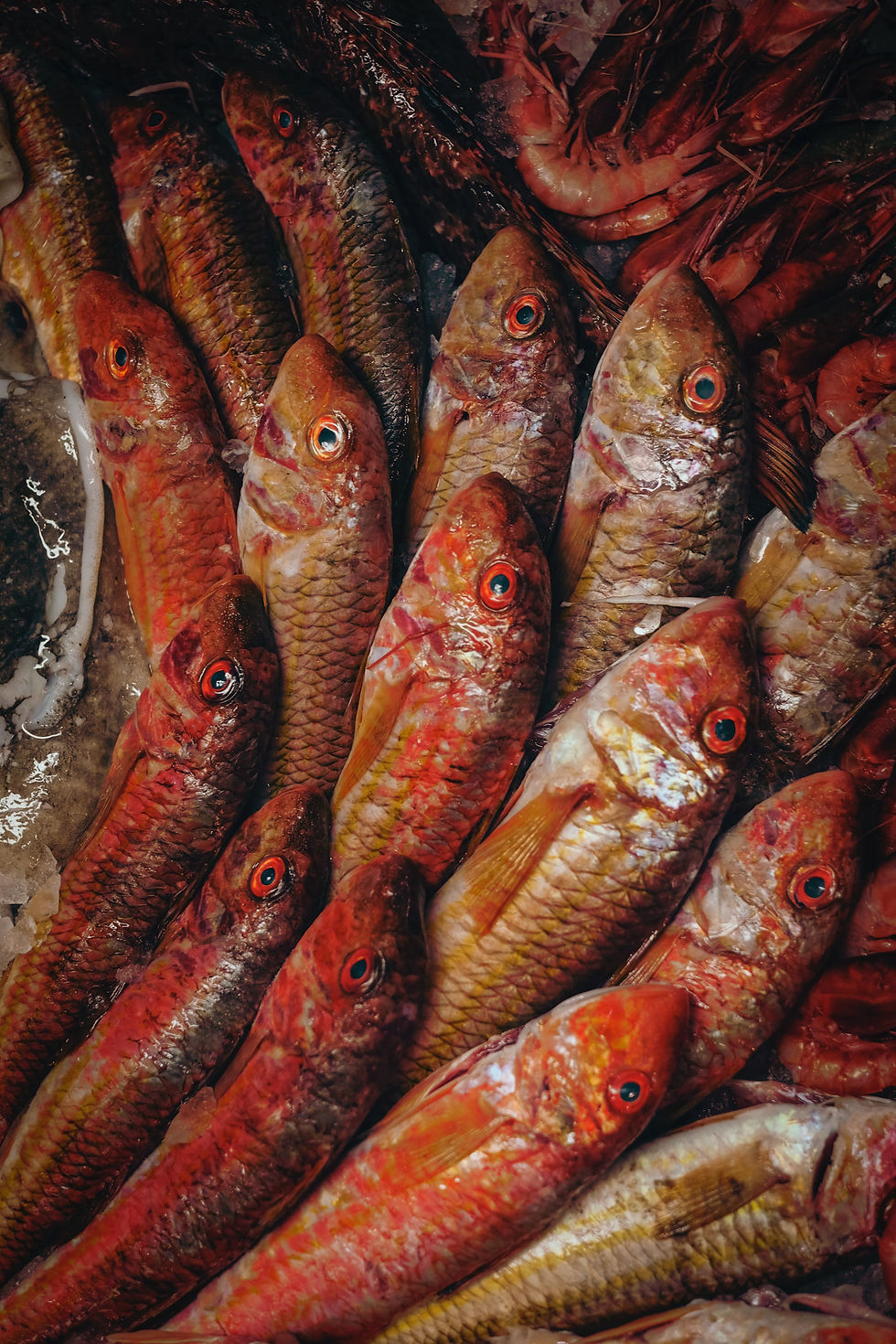“The vastness of the Oceans and the almost prehistoric abundance, - still forges a Potemkin in 2020.”

If we plunge beneath the big blue surface, - the Oceans are deeply troubled.
For one, due to massive overfishing.
According to Food and Agriculture Organization of the United Nations (FAO) 93% of the world´s commercial fish stocks are already fished at maximum levels - or are overfished. And since 1990 to 2018 there has been a total rise of 122% in seafood consumption worldwide.
Fish, crustaceans, molluscs and other aquatic animals are the last commercialized wildlife.

Eating a wild mountain goat in Europe is a costly affair and often it is also discussed, while dining on this unique individuals flesh, how this particular goat has been living a life of freedom in the wild, - and how the meat has a different and more intense flavor.
But when eating seafood, - it rarely passes the dinner table that an animal is served on the platter. Seafood is merely food from the sea. Good for the health of humans, - important for brain function and so on. That is true.
But the fact that being a “pescatarian” has become conceptualized proves a point.

An important notion that we, more often than rare, forget to consider fish to be animals…
They are defined as seafood, - glossy, odd looking creatures, that is often “breaded”, in order to hide the slightest detection of an animal shape.
But fish, crustaceans, molluscs and more are also animals, - more specifically wildlife.
On the ground, - we rarely eat wild caught animals. We farm our food.
At the dawn of day, we would go hunting for a Deer, a Wild Bore or a Bison, - but today this is generally done exclusively by a minority of hunters, that mainly enjoy shooting down a Pheasant once or twice annually as a “sport”… Commercially we farm our food.
Except when it comes to the Oceans.
Fishing in the Ocean, can be compared to this earthly scenario :
Hunters are out hunting specifically for deer in a forest, due to the high market value.
But in order to catch as many deers as possible, - they cut down all the trees, “unintentionally” killing a lot of the other animals living in the forest, - and finally they have their catch. Leaving behind a destroyed habitat.
This is a scenario at the extremes - but it is non the less a comparison to the commercialized fishing industry.
Of cause, - this “criticism” does not apply to all fishermen.
That would be just as deficient as calling on all fisheries as sustainable. There are many different types of fisheries.
Low fishing for instance, is extremely important to preserve, due to this supporting the livelihood of many smaller communities and local food sources.
However, about 55% of the worlds Oceans have been taken over by industrial fishing.
There are also industrial fishermen and fishing fleets - fishing sustainably, abiding the law and trying their best to make sure that the fish stocks are not overexploited.

Non the less, - the overall picture of the worldwide fishing industry is critical. In 2018, fisheries produced 94.4 million tons of fish. And it is important also to keep in mind that a gasping (approx.) 40% of fish are caught unintentionally as by catch - and discarded.
Imagine being a tiny fish in the Ocean, where about 55% has been taken over by industrial fishing, - combined with the fact, that Industrial fishing vessels record approx. 400 million hours of work annually ! And it is important to note that these are the recorded working hours… It is not exactly a plausible thought that a tuna or a sea turtle, - living and traveling cross the oceans, - could stand a chance of avoiding a fishing vessel.
To cut it short…The Oceans need to be replenished.

Looking at statistics, figures, and facts, it is as clear as the light of day, that commercial fishing walkes hand in hand with overfishing.
This however is a layered and complex phenomenon with several alarming problems.
But no matter how one should pursue to explain commercial fishing, - having a huge commercial infrastructure around fishing wildlife out of the Ocean, does not sound like a long lasting solution, when compared to the reality on land.
So what to do ? The total rise of seafood consumption from 1990 to 2018 has risen with 122%.
The demand for seafood is massive.
But shall we in 2020 allow wildlife to be hunted down for commercial consumption ?
We need to find other and new solutions.
Fish, crustaceans, mollusks and more are wildlife and should be respected as such.
Comments